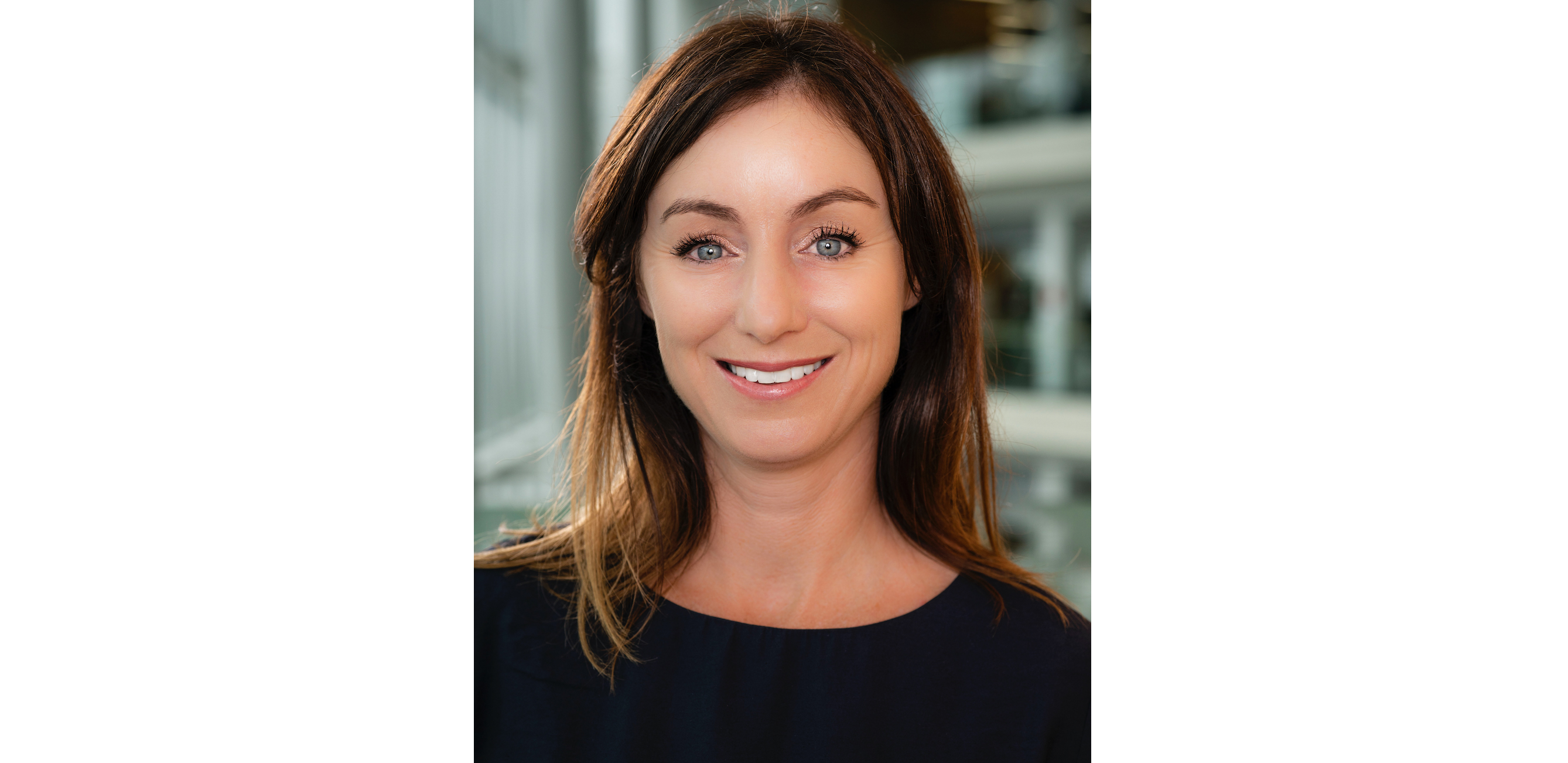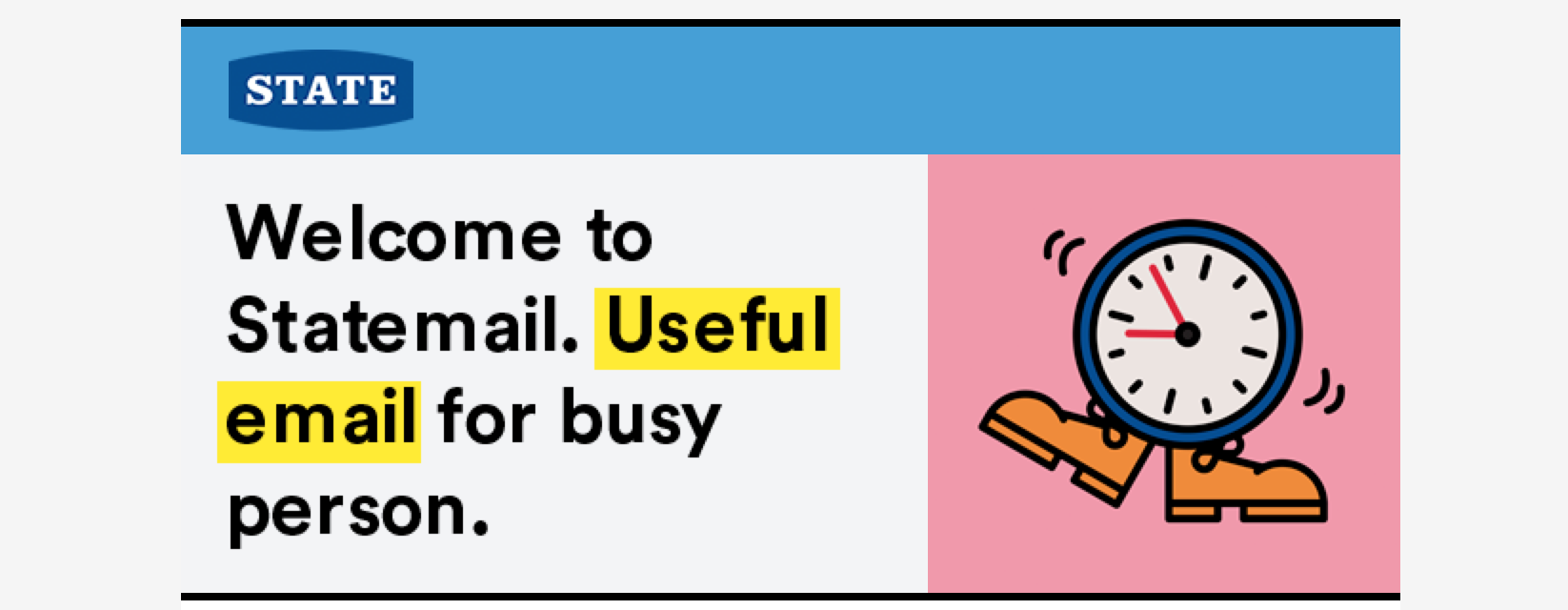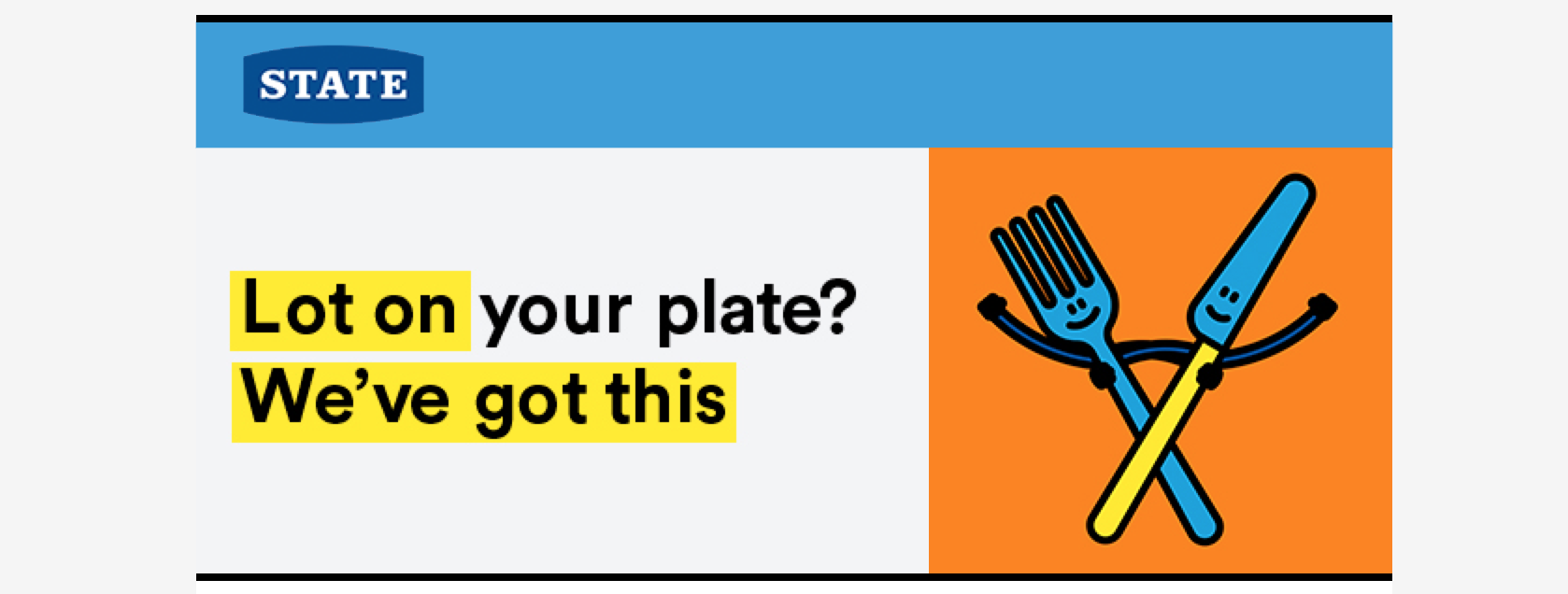Behind State’s ‘too-busy’ transformation
The State brand has been on a significant journey of change over the past year. From a brand that was in decline, it’s now firmly back in play. We sit down with Gabrielle Markwick-Brown, Marketing Manager at State, to talk about the journey she’s taken the brand on in the past year and how other brands can learn from her success.

Q: Can you take us back a year ago to when you made the decision to reposition the State brand?
A: State had been losing relevance for its customers – and failing to attract new ones – for a long period of time, and it was increasingly hard to distinguish the brand from AMI. The current ‘click.done’ campaign wasn’t working, and we had to make the difficult decision whether to have two brands in market or not.

Q: What was the lightbulb moment?
A: We went back to basics and took the time to understand who our customers really were, how they were living their lives, what their worries were and what they did and didn’t like about State. We adopted a new segmentation analysis model from Australia based on Maslow’s Hierarchy of Needs and used it to separate our two brands, differentiating them so they didn’t compete. From the segmentation and working with our agencies, we found a beautiful insight around ‘the stretched worker’.
State customers are really busy – every day. They’re running around being Mums and Dads, helping out at their kids’ footie games, going to work, doing the housework. When one small thing goes wrong, it can have a domino effect and tip them into too-busy. We felt that it was in these moments State could really show up. This is where our new brand positioning, ‘Insurance for too-busy lives’ came from.
For State it’s not necessarily just about being quick and easy, it’s about calling out State’s heritage and using this to give stretched workers the certainty they need around an insurer that knows its stuff. We could be the brand that made it easier for customers to deal with insurance all the way from buying the right kind of cover to making a claim. And we knew we had the people and the systems to turn this promise into reality.

Q: Why do you think the new brand resonated so well?
A: I think it’s just really relatable for a lot of people. For our audience, it’s not about saying ‘I’m so busy because I’m important’. It’s because work, kids and family just make us busier than we would like to be. It was also really key to bring back an emotional connection to the brand. And this wasn’t about making people cry or tugging on the heartstrings – it was about connecting in a different way. So we retained the essence of the State brand, slightly quirky, slightly funny, but always relatable.
Q: The visual and copy treatment is particularly distinctive. Can you talk us through that?
A: Our beautiful graphics and short, stream-of-consciousness copy style really makes us stand out in the market by emotionally connecting with our audience at key moments in their lives. It also enables us to be really clever from a digital OOH perspective or on the radio, so we can make it relevant to not only the person but the time of day. Yes, we’re an insurance company, but how do we insure that we’re meaningful and relevant to our audience, and how do we do this outside of our product offering? The distinctive brand elements enable us to do this.
Q: What were the biggest challenges you faced?
A: We needed to get everyone to believe that State was worth investing in – and we had to engage multiple stakeholders across the business to get behind this and turn it into a reality. For all of us involved, it initially felt like we were stuck in the insights and planning phase. And I’m an action person who likes to do things, and it felt like we had a lot of conversations that went round and round. But in hindsight, that really helped us land what I think is a really good position for the brand – and I think that’s why it’s done really well. From the moment we got the concept approved to going live, we had six or seven weeks, so it was huge. We had to pull together legal, product, pricing, underwriting and get the leadership team across the line – and for them, this was very different.
And then we also had to consider the impact on existing customers – because in reality, the majority of them probably aren’t our target audience. So we had to ensure it was still relevant to them. All our agencies helped with this, but Chemistry in particular helped to translate the brand into customer communications people could really relate to. For example, you helped create a tone of voice guide which helped translate billboard copy into long form customer copy throughout the brand touchpoints.
Q: Which results are you proudest of?
There was a moment when we sent out our first new-look customer email and it got a great response – and I got really excited because I knew it was working. I’m really proud that we met our business objectives: to reduce the decline in our policy losses by at least half. In the first ten weeks of the campaign, we saw a dramatic turnaround in the number of policies lost every week – and that was without any new products or offers.
We also smashed our brand objectives in 3 months, achieving brand awareness of 66% in the first three months – especially after everyone said it would take at least a year to see a shift in metrics like this.
A: And finally, what are your top four takeaways for someone else embarking on a similar journey?
- Build a revolution – find those people who’ll join you and give them the freedom to be amazing. At the same time, make sure you get everyone across the line at every stage
- Be brave and have faith that you’re doing the right thing – choosing big, bold and beautiful isn’t going to be easy
- Make sure all the touchpoints work – it’s not just about creating a campaign, it’s about the experience we’re creating for our customers and our people
- Plan a celebration at the end so you have something to look forward to – bubbles are a great motivator.
